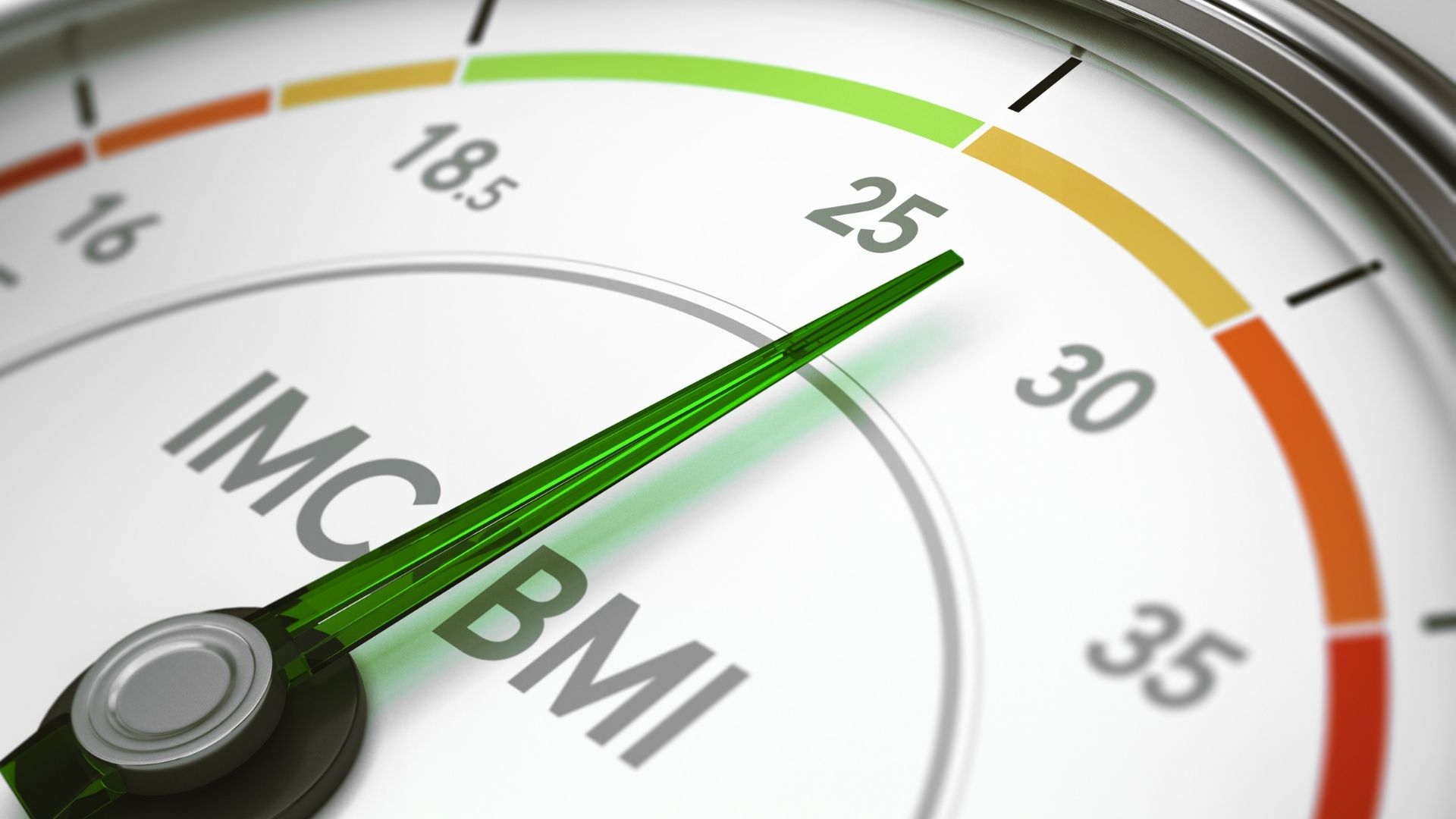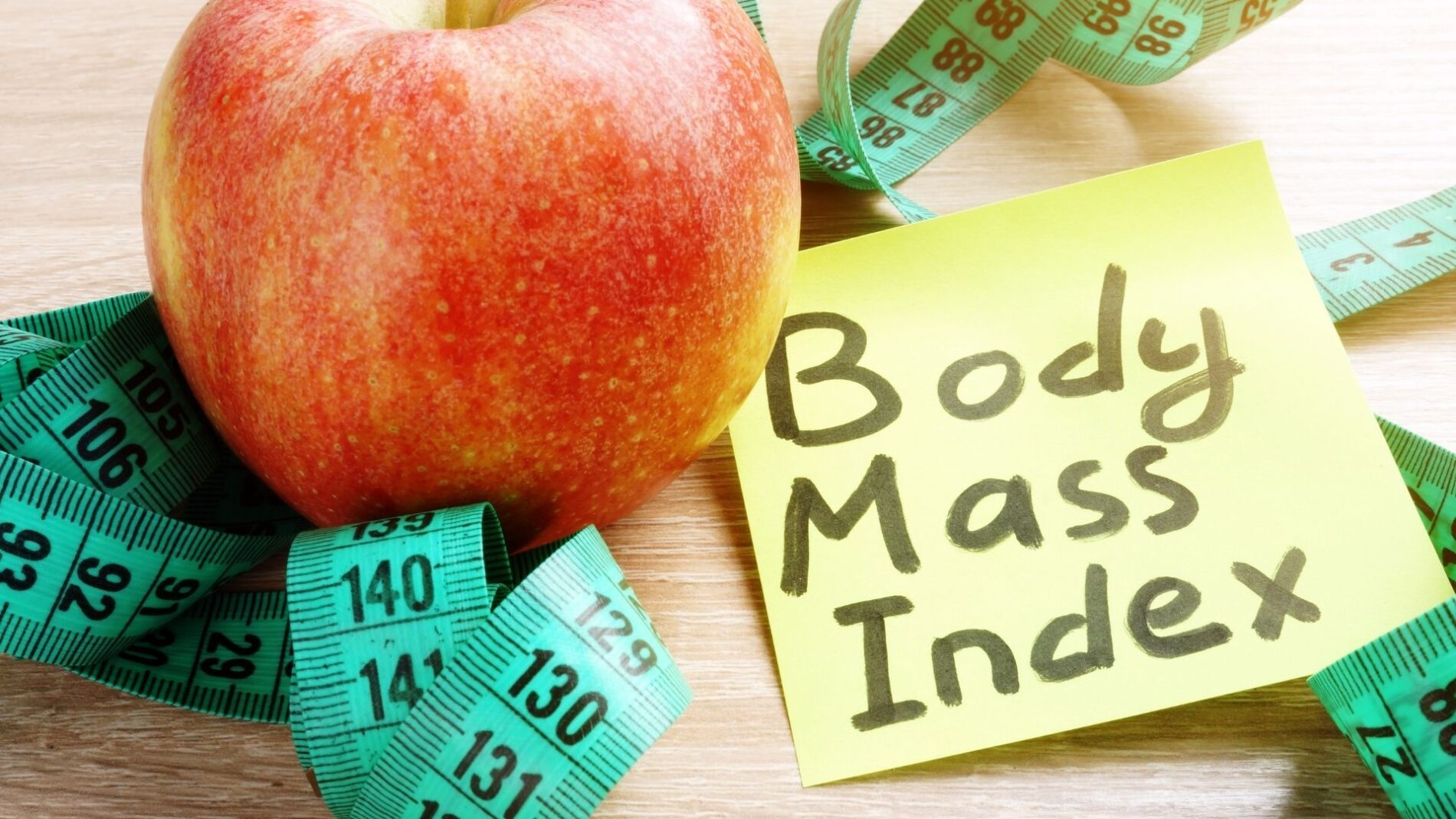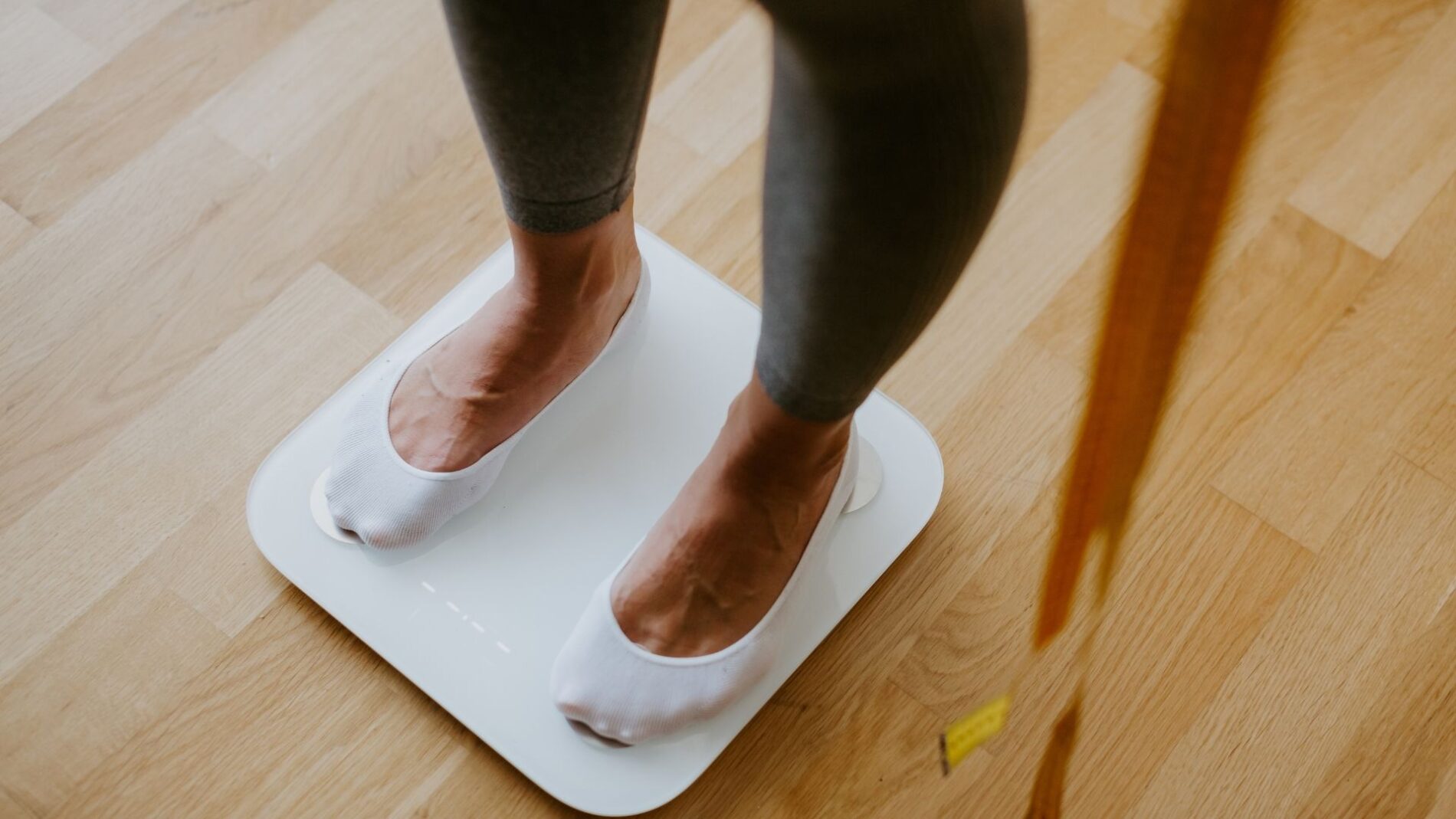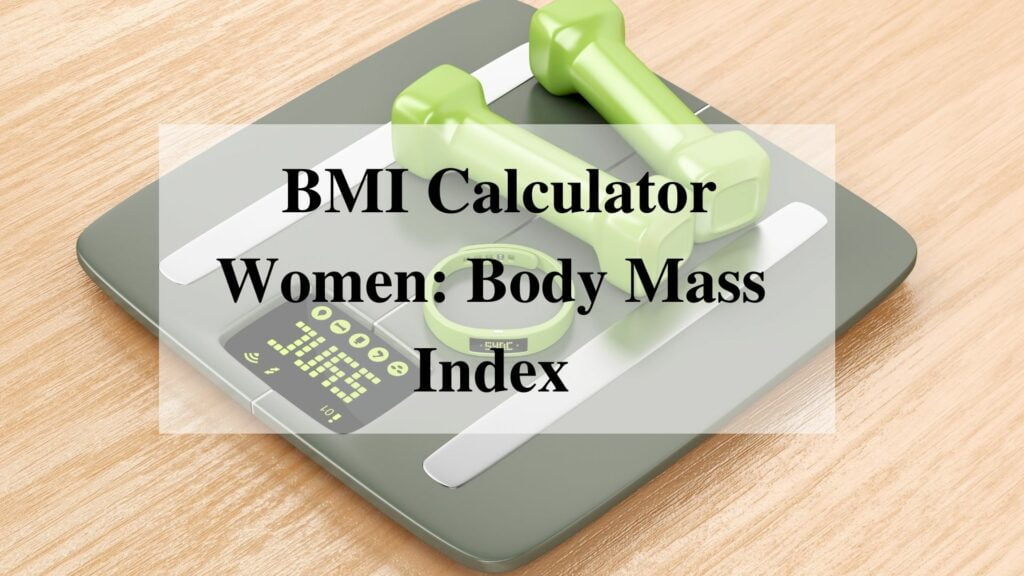BMI, or Body Mass Index, is a number that can help you determine if you’re an overweight person. It takes into account your weight and height to calculate the bmi for women. For example, a bmi of 25-29.9 means that a person has a healthy weight. Whereas a bmi of 30 or greater means they are obese. This article will provide information on bmi calculator women and how it works. So the readers can make more informed decisions about their weight.
Contents
What is BMI

It’s difficult to remember everything about your prenatal visits. You’ve had your BMI measured for years and probably didn’t even know it. The nurse takes your vitals and measures your weight when you go to the doctor; sometimes they measure your height as well. Your BMI (Body Mass Index) is in calculation by taking these measurements. A normal weight is a BMI of 19-24.9. While An underweight is a BMI of less than 19, and obesity is a BMI of more than 30.
BMI or Body Mass Index is in use to calculate whether your weight matches your height. It helps in determining if you are overweight, underweight, or normal.
The simplest way to find your Body Mass Index is to use an online bmi calculator. This bmi calculator can provide you with a good estimate of the amount of body fat that you have. Which, in turn, tells you whether or not you are underweight, normal weight, overweight or obese.
A person’s body mass index (BMI) is determined by dividing their weight in kgs by the square of their height in meters. A BMI of less than 18.5 is considered underweight, while one of more than 25 is overweight. Underweight and obesity are two terms that describe a person’s health condition based on the results of their body mass index (BMI). However, because women’s bodies don’t break down fat as efficiently as men’s, there are some limitations to female BMI scores.
What Does BMI Tell
Hippocrates was the first to realize that obesity causes infertility and early death. Although Lambert Adolphe Jacques Quetelet developed the BMI in the 1830s. It took more than two thousand years to scientifically test his ideas and see how “excess of humor” relates to a variety of health problems and early deaths.
American life insurance firms needed a quick and easy technique to determine the risk of having to pay out on life insurance policies, and in 1942, BMI was shown to be statistically significant. The findings were later validated by researchers who discovered that BMI measurements are still used today to assess health risk, as seen on the World Health Organization’s Website:
“The risks of coronary heart disease, ischemic stroke, and type 2 diabetes mellitus rise progressively with increasing body mass index (BMI), a measure of weight relative to height. However, body mass index (BMI) increases the risk of breast cancer, colon cancer, prostate cancer, endometrial cancer, kidney and gall bladder cancers. The death rate rises as body weight increases; as measured by BMI.”
Since the early 1980s, the World Health Organization (WHO) has used a BMI of 30 or more to identify obesity.
Why Should I Care For BMI

BMI is a measure of body fat based on height and weight. bmis are used to assess risk for diseases that can occur with being overweight or underweight, such as type-two diabetes, heart disease, osteoarthritis, and certain cancers.
As recommended by the world health organization (who) “bmi should be calculated from measured rather than self-reported data in large surveys where possible because it reduces misreporting bias.”
Losing weight and maintaining a healthy body mass index (BMI) can help you sleep better, have more energy, have better control over bodily fluids and blood pressure, have less strain on your heart and circulatory system, enjoy greater rest, lower blood triglycerides levels, improve blood sugar levels, reduce the risk of diabetes development, and minimize the chance of heart disease and several cancers.
Obesity
Overweight and obesity are linked to a higher incidence of diabetes, heart disease, osteoarthritis of the hips, knees, and ankles (due to greater wear and tear on those joints), as well as a variety of other health issues.
If you are morbidly obese (deathly fat) and have two or more weight-related medical problems, your BMI is 35-39.9 and you are healthy, you’re in a dire situation. Your risk of developing a medical problem (heart attack or stroke that can lead to death) is substantially higher. If your BMI is greater than 39.9 and you are otherwise healthy, you are also in the same dire situation if your BMI is greater than 39.9 and you have no health issues.
Excess weight puts an added strain on your heart. It also raises blood pressure, blood cholesterol, and triglycerides lower HDL (good) cholesterol levels, and makes diabetes more likely. It can also make diabetes worse. Maintaining a 3-5% weight reduction over time is may result in significant improvements in blood glucose, triglycerides, and the risk of type 2 diabetes. Greater weight loss can even help reduce blood pressure and improve lipid profiles.
BMI Calculator Women Ranges
Bmi calculator women help determine if you are at a healthy weight for your height. Knowing what bmi range is right for you can help guide the type of diet and lifestyle changes that need to occur in order to maintain or lose weight. The bmi ranges below will give you an idea of where your bmi falls in comparison to other women so that you can take care not to gain too much weight when pregnant, be able to assess whether or not certain diets may work well with how active you are.
How to Use BMI Calculator Women

What is your body mass index (BMI)? You can use a calculator, consult your doctor, or do it yourself with the methods below.
- Use a weight scale on a hard, flat, non-carpeted surface. Wear as little clothing as possible and no shoes.
- Weighing yourself to the nearest pound is a good way to start.
- Stand straight and tall against a wall with your eyes forward and your heels together. The back of your head, buttocks, shoulders, and hips should all be touching the wall.
- Use a ruler to draw a line from the top of your chin, through your hairline, to where it joins your neck. Then estimate how tall you are in feet and inches to the nearest 1/4 inch. You must use inches for this portion of the measurement.
- Find out how tall you are in feet and inches in the first column of the Body Mass Index Risk Levels table. The minimal-risk weight range is determined by your height, whereas the moderate-risk (overweight) and high-risk (obese) ranges are given according to your body mass index.
Benefits of BMI Calculator Women
The BMI calculator women is a useful indicator of where someone’s weight falls on the spectrum from underweight to obesity. It may also aid people in keeping a healthy weight and avoiding disease by assisting them in maintaining their ideal body mass index (BMI).
BMI is used for determining the following –
- Type 2 diabetes, a disease in which the body does not produce enough insulin or properly use it.
- When you feel your bones grinding together, the pain can be excruciating because of the inflammation and irritation it causes.
- Cardiovascular disease is a term used to describe the most common causes of heart attacks, congestive heart failure, and strokes.
- Cancer is one of the most frequent disease-related deaths.
If a BMI calculator women are classified as “unhealthy,” they may begin making modifications to their diet and lifestyle in order to reduce their chances of developing various illnesses.
The following are some of the advantages of BMI as a measure:
- It’s simple to calculate at home using a scale and tape measure.
- It’s simple to measure because it’s inexpensive.
- it has a strong correlation with body fat levels
- a significant amount of research shows a link between BMI and health.
Drawbacks of BMI
BMI can estimate whether a person’s weight is healthy, but it has certain drawbacks.
- While BMI calculator women are commonly in use to determine whether someone has an abnormal amount of body fat. It does not distinguish between fats, muscle, and bone in the body. As a result, a muscular guy with the same BMI as a person who is overweight exists.
- Furthermore, as people grow older, their body composition varies, particularly among women. Between the ages of 25 and 65, the typical female loses approximately 13 pounds of muscle and bone. Belly fat also grows to four times its previous amount by the age of 65 in women.
- A 70-year-old woman who weighs what she did at 25 may have a BMI in the healthy range despite having a considerably larger percentage of body fat than she had at 25.
- A high percentage of body fat is detrimental to one’s health. According to a 2014 study, people with a “normal” BMI but a lot of body fat had an increased risk of developing metabolic syndrome. Those who had more abdominal fat had a higher mortality rate.
- According to different research, some postmenopausal women with a body fat percentage of 35%, which health experts consider an indicator of obesity, were not classified as obese by their BMI.
Because of this, merely measuring a person’s BMI may be misleading when it comes to assessing their overall health, especially if they are muscular, menopausal, or peri- or postmenopausal, and have abdominal fat but are otherwise a reasonable weight.
What is the ideal BMI?
On an ideal health basis, regardless of who you are or your physical health condition, a BMI of 21 to 23 has a lot going for it. We’ve already spoken about how a BMI of 21 to 23 is ideal on every level, no matter who you are or what your physical well-being status is.
Contrary to popular belief, BMI does not assess a person’s beauty or attractiveness; it simply considers too little body weight as an indication of health.
Weight loss is not only about being thin. It’s all about improving one’s health, not just losing weight.
What sort of weight reduction goal do you establish if that’s the case?
If you’re considering the percentage of extra weight loss, you’ll need to choose which weight is in use as a base.
The ideal weight choice may have a significant influence on the amount of surplus weight. It can also have a big influence on how the conclusion is in portrayal.
If You Have a High BMI
A BMI of 21 is unlikely to be a reasonable goal unless you are within close range of your ideal body weight. It isn’t out of the question. Many people do it, but because life throws a slew of roadblocks at us, this is usually quite tough.
If your BMI is deemed obese or higher, it’s usually a good idea to aim for dropping below the current category. Ideally, you should try to drop out of the obese categories entirely. Even if you don’t achieve a normal, healthy BMI, a minimum 5% weight reduction makes sense and is achievable.
It’s tough to reduce weight when you have a BMI of 30 or more, but it’s unquestionably not doable in one try. For most people, this number would imply reducing 90 to 100 pounds in one shot. If you follow a typical diet like slimming club, you may expect to lose approximately 1 pound each week. This amount of weight loss would take approximately 2 years for everyone if no changes are there. Most individuals cannot accomplish this in their actual life.
Lipotrim and BMI
Your ideal BMI is one that you can reasonably achieve. To combat food addiction, Lipotrim uses palate retraining, calorie restriction, and total abstinence from standard meals in order to help people lose weight. While continuing to be nutritionally complete, Lipotrim incorporates palate retraining, calorie restriction, and abstinence from conventional foods to treat food addiction.
Lipotrim may aid in weight reduction quickly and safely. Lipotrim can help people maintain off the pounds without restricting their diets. However, in order to achieve your objective, you’ll need more than one dieting approach.
If you’re following the plan below, it’s best to start weighing yourself every week. Our advice is to lose at least 5% of your starting weight every sequence until you’ve reached a BMI of 21. At that point, your weight should not be harming any aspect of your health in any manner.
Other Methods for Measuring Weight
Other than the BMI calculator women. They can use a variety of techniques to assess their weight, body composition, and risk for disease beyond BMI. These include:
Waist Circumference

The belly fat assessment method uses a soft tape measure to measure the circumference of the waist. People may use this technique to get an idea of how wide their waist is.
Waist-to-Hip Ratio (WHR)
This approach also assesses abdominal fat. The waist-to-hip circumference ratio is in use to compute a person’s WHR. According to the World Health Organization (WHO), a WHR of 0.85 or less for women indicates a low risk of weight-related illness.
A physical examination, which is performed by a doctor, can include the following diagnostic tests:
- Densitometry: A body fat test is conducted when someone goes in the water. The doctor measures their body weight while they are in the water to calculate their body fat percentage. Densitometry is generally done in a laboratory setting.
- Dual-energy X-ray absorptiometry: The technique involves sending two low-level X-rays through the body to determine relative percentages. Different tissues in the body have different speeds of X-ray diffusion. So this technique passes two low-level X-rays through the body and measures their cumulative diffusivity.
- Bioelectrical impedance (BIA): BIA determines someone’s body fat percentage by passing a low-level electric current through the body.
- Isotope dilution: This test involves drinking water with isotopes and then providing samples of bodily fluids to analyze. These samples allow a physician to determine the person’s body composition.
Conclusion
Your BMI can be an important piece of information in determining whether or not you’re at a healthy weight. Also, you might want to change some aspects of your lifestyle. Remember that the best way to maintain a balanced diet and exercise routine for life is by listening to your body (and mind!). If you know how much time it takes for you to burn calories with different levels of activity, then logging them into our calorie counter tool may also be helpful! Finally, remember that even if one number doesn’t tell the full story. There are many factors that affect someone’s health status. So don’t forget about other ways of assessing your weight and health.
For more tips on health interventions for weight loss, contact Mantra Care. We can help you develop a healthy weight loss program that is tailored to your specific needs and goals. You can also consult with a registered dietitian or nutritionist through our online nutrition counseling program if you have any questions or concerns about starting a new diet. Mantra Care is here to help you on your journey to better health! Contact us today to learn more about our services.


